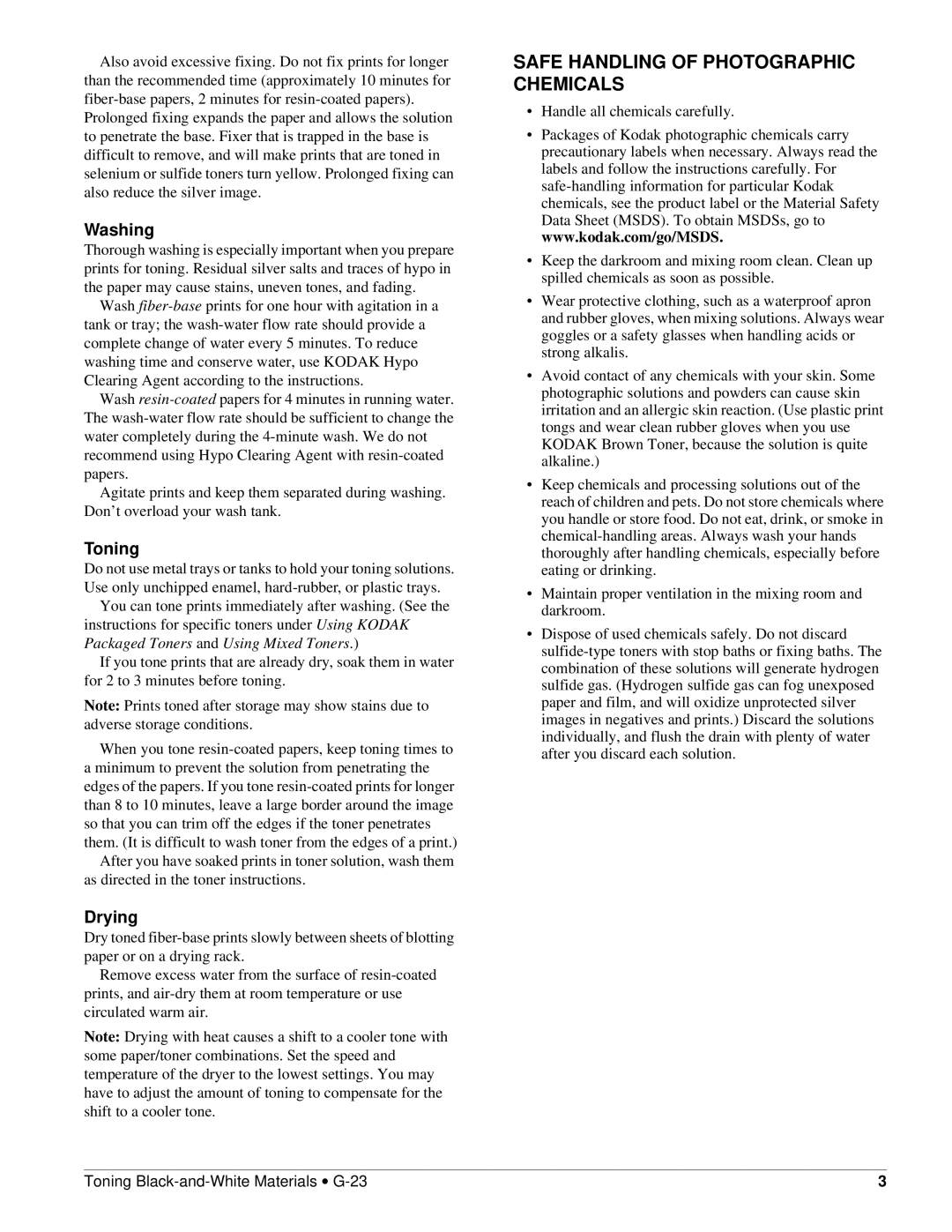Also avoid excessive fixing. Do not fix prints for longer than the recommended time (approximately 10 minutes for
Prolonged fixing expands the paper and allows the solution to penetrate the base. Fixer that is trapped in the base is difficult to remove, and will make prints that are toned in selenium or sulfide toners turn yellow. Prolonged fixing can also reduce the silver image.
Washing
Thorough washing is especially important when you prepare prints for toning. Residual silver salts and traces of hypo in the paper may cause stains, uneven tones, and fading.
Wash
Wash
Agitate prints and keep them separated during washing. Don’t overload your wash tank.
Toning
Do not use metal trays or tanks to hold your toning solutions. Use only unchipped enamel,
You can tone prints immediately after washing. (See the instructions for specific toners under Using KODAK Packaged Toners and Using Mixed Toners.)
If you tone prints that are already dry, soak them in water for 2 to 3 minutes before toning.
Note: Prints toned after storage may show stains due to adverse storage conditions.
When you tone
After you have soaked prints in toner solution, wash them as directed in the toner instructions.
Drying
Dry toned
Remove excess water from the surface of
Note: Drying with heat causes a shift to a cooler tone with some paper/toner combinations. Set the speed and temperature of the dryer to the lowest settings. You may have to adjust the amount of toning to compensate for the shift to a cooler tone.
SAFE HANDLING OF PHOTOGRAPHIC CHEMICALS
•Handle all chemicals carefully.
•Packages of Kodak photographic chemicals carry precautionary labels when necessary. Always read the labels and follow the instructions carefully. For
•Keep the darkroom and mixing room clean. Clean up spilled chemicals as soon as possible.
•Wear protective clothing, such as a waterproof apron and rubber gloves, when mixing solutions. Always wear goggles or a safety glasses when handling acids or strong alkalis.
•Avoid contact of any chemicals with your skin. Some photographic solutions and powders can cause skin irritation and an allergic skin reaction. (Use plastic print tongs and wear clean rubber gloves when you use KODAK Brown Toner, because the solution is quite alkaline.)
•Keep chemicals and processing solutions out of the reach of children and pets. Do not store chemicals where you handle or store food. Do not eat, drink, or smoke in
•Maintain proper ventilation in the mixing room and darkroom.
•Dispose of used chemicals safely. Do not discard
Toning | 3 |
